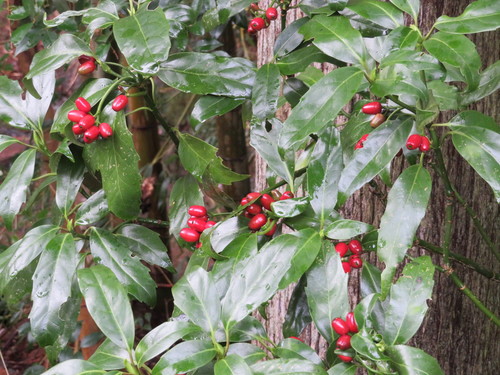About Fireweed
A tall, herbaceous perennial known for its vibrant magenta flowers and ability to thrive in disturbed areas, often appearing after wildfires.
Care Requirements
Water Needs
every 7–10 days during active growth, less frequently in dormant periods
Water thoroughly but infrequently; ensure good drainage; avoid wetting foliage....Light Requirements
Full sun to partial shade
Full sun (6–8 hours of direct sunlight daily); tolerates partial shade in hot ...Care Level
Easy
easySoil Requirements
well-drained, sandy loam with moderate fertility
Ensure fast drainage; avoid heavy clay; enrich with compost if needed....Temperature Needs
Hardy in USDA zones 2–7; tolerates cold winters and moderate heat; prefers cool summers.
Mulch for winter protection; water deeply in heat; avoid sudden temperature shif...Common Problems & Solutions
Yellow Leaves
Yellowing leaves in Epilobium angustifolium may indicate nutrient deficiencies, such as nitrogen or ...
Diagnose & FixWilting
Wilting in Epilobium angustifolium is typically a response to water stress, either due to drought co...
Diagnose & FixComplete Care Guides
How to Propagate
Stem cuttings or division; seeds can also be sown in early spring....
Best Time: Early spring or late summer for stem cuttings; divide clumps in early spring.
Full Propagation GuideHow to Prune
Deadhead flowers; trim back overgrown stems; cut just above a leaf node....
Frequency: After flowering; as needed to control spread.
Full Pruning GuideHow to Repot
Gently lift the plant; divide roots with a sharp knife; replant in fresh soil with good drainage....
Best Season: Early spring before new growth begins.
Full Repotting GuideHow to Fertilize
Use a balanced, slow-release fertilizer in early spring; avoid over-fertilizing, as this plant is no...
Frequency: every 4–6 weeks during spring and summer with a balanced, diluted fertilizer
Full Fertilizing GuideFrequently Asked Questions
Q: Does fireweed attract pollinators?
A: Yes, fireweed is highly attractive to bees, butterflies, and other pollinators due to its nectar-rich flowers.
Read Full AnswerQ: Is fireweed edible?
A: Yes, the young shoots can be eaten like asparagus, and the flowers and leaves can be used to make tea.
Read Full AnswerQ: Why is it called fireweed?
A: It commonly grows in areas recently affected by fire, rapidly colonizing disturbed soil.
Read Full AnswerSimilar Plants




